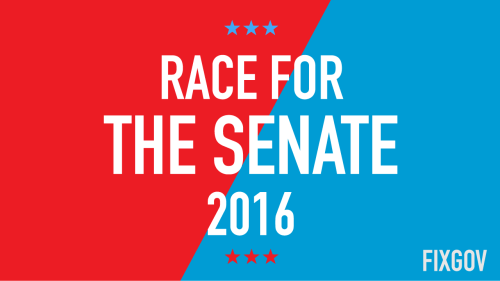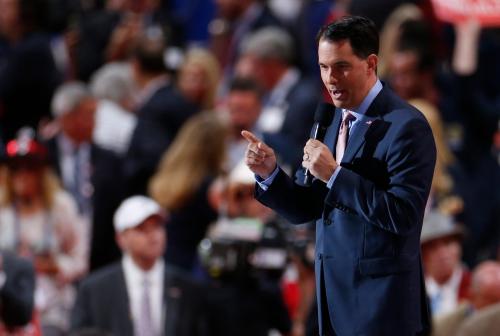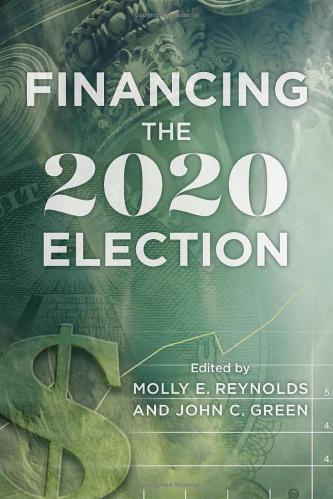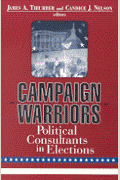Marjorie Hershey is Professor of Political Science at Indiana University.
In the current race to see which campaigns can increase the nation’s burden of negativity and polarization, the Indiana Senate campaign is a real contender. To replace retiring U.S. Sen. Dan Coats, a Republican, Indiana primary voters nominated Todd Young, who currently represents the state’s 9th U.S. House district. Hoosier Democratic voters chose Baron Hill, Young’s predecessor in that House district. But Hill’s Senate campaign failed to catch fire during the winter and spring, and it looked as though Young would win easily.
That’s when the national Democrats put in a pinch hitter. In July, Hill said he had decided to exit the Senate race. Within days, Evan Bayh announced his candidacy and was quickly nominated by the state Democratic Party.
Typically, the two national parties approach Senate races as a chess game; especially in competitive elections, the parties’ Hill Committees constantly seek new data to tell them which campaigns need an infusion of party independent spending and which already-reserved ad times are a waste of money. Yet replacing a chess piece while the game is ongoing, while not unprecedented, is certainly a dramatic move. It raises questions as to whether national party organizations, which can face local pushback even when they take sides in a primary, will more regularly try to override primary election results by substituting a more promising candidate.
The Democrats’ move changed the board. Many analysts saw Bayh as the national Democrats’ biggest recruiting prize. Betting on the race’s outcome took a sharp turn.
That was probably unwise. Indiana is a very Republican state. Bayh had been a popular two-term governor by endorsing moderate, even conservative policies, and he was easily re-elected to the Senate in 2004 against a token Republican opponent. But Bayh left the Senate in 2010 with bitter words about its dysfunction, after posting an impressive record of absences from the chamber. By 2016, Evan Bayh was largely unknown to younger voters in the state. He had spent his time since 2011 in Washington, working as a consultant for a lobbying firm, for which he was well-compensated. He had more than $10 million in campaign funds left from his earlier races—another strong incentive for national Democrats to pressure him to enter the race. Those funds could free the Democratic Senatorial Campaign Committee (DSCC) and allied groups from having to spend scarce dollars in Indiana. But the high-stakes struggle for party control of the Senate ensured that Young would also have ample resources. Because the Hoosier race is one of very few competitive races in Republican states, outside groups were expected to add substantially to the $1 million in Young’s campaign account at that time.
Those Republican outside spenders, who had largely ignored the race while Hill was the Democratic candidate, include Americans for Prosperity (AFP) and Freedom Partners Action Fund, both Koch-supported advocacy groups; the NRA, the U.S. Chamber of Commerce, the National Republican Senatorial Committee, and the Mitch McConnell-related Senate Leadership Fund. Collectively, they had spent $7 million by early October on communications attacking Bayh, plus almost a million dollars supporting Young. The AFP in particular is doing canvassing, phone banking, mailers, and other ground war activities on Young’s behalf. On Bayh’s side, the only active spenders outside of his own campaign are the DSCC and the Senate Majority PAC, and only about $600,000 had been spent against Young by early October. The race is currently so close that national Democrats’ hope of a vital Senate pick-up with Bayh as their candidate is in doubt. And Bayh’s campaign may be having trouble finding enough open advertising slots to spend its ample resources on.
Three key issues have characterized the race: “He’s not ‘one of us’,” “He’s not ‘one of us’,” and “He’s not ‘one of us’.” The networked Republican campaign makes this point against Bayh in two main ways. First, it relies heavily on the claim that Bayh is a lobbyist, a Washington insider, cozy with Wall Street interests, who made a lot of money in that enterprise. Another prong of that attack is the same charge made, with apparent effectiveness, against Republican Senator Richard Lugar in his 2012 reelection race: that Bayh no longer lives in Indiana. As evidence for this claim, ads feature a neighbor of Bayh’s Indianapolis condo who was not aware of his residence there, and a ruling by Hoosier election officials that Bayh was an “inactive” voter in Indiana. Although his driver’s license still lists an Indianapolis address, Bayh did not help himself when, on being asked about it, he got the name of his street wrong.
Bayh’s campaign applies the same charge to Young. Bayh’s ads stress his Hoosier roots. They stress group identities to convince voters that Young, as a sitting Congress member, is a Washington insider, not “one of us.” Ads argue that Young has not supported Social Security and votes consistently against the interests of the elderly. But a larger proportion of Bayh’s ads have been positive (compared to Young’s), probably because Bayh’s own campaign funds most of his ads, rather than outside groups. Many of these ads highlight Bayh’s record as governor in providing education funds to needy students. Others decry Young’s efforts to cut college student loans and put more debt on the backs of middle class families, again making Young “not ‘one of us’.” Both campaigns, then, are using issue stands and personal characteristics mainly as a means of demonstrating that their opponent is no longer a real Hoosier and thus can’t be trusted by Indiana voters. Trying to distance the opponent from the constituency in identity terms has become standard practice in these times of resentment politics. Many criticize this tactic as “dog whistle politics” and therefore illegitimate. But of course, dog whistle politics would have no impact if there weren’t a lot of dogs out there listening for whistles.
One reason why education has become a major issue in the race is the roiling controversy over Governor (now vice-presidential candidate) Mike Pence’s record of cutting public school funding and using taxpayers’ money for vouchers that can be spent on private (including religious) schools. In 2012, state Republicans were stunned at the upset victory of Democrat Glenda Ritz as state superintendent of schools, the only Democrat to win statewide. Ritz is up for reelection in 2016, and again has the strong endorsement of the Indiana State Teachers Association, a major source of support for state Democrats. Donald Trump’s impact on the race is more difficult to gauge. Trump won Indiana’s Republican primary, and his strongest supporters—older white males with less than a college degree—are well represented in Indiana. But the Republican gubernatorial candidate is linking his campaign not with Trump but with the Republican who preceded Pence as governor, Mitch Daniels.
To win, Bayh needs to introduce himself to younger Hoosiers who are not familiar with his record or family name. Young needs to increase his name recognition outside his south-central Indiana House district. Anyone who places a bet on the race at this point is a true risk-taker.








Commentary
Race for the Senate 2016: Key issues in Indiana
October 25, 2016